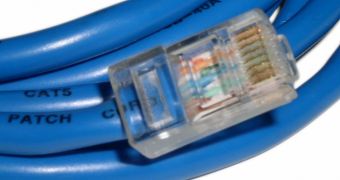Fiber optics provided a huge data transmission boost when they were adopted as replacement for copper cables, but even that advantage eventually stopped being so incredible, as file transfer needs grew.
They have reached the point where people are looking into alternatives to fiber optics, as well as ways of making fiber optics better.
A team of researchers has reached a milestone in the latter: mirror image signals.
As published in Nature Photonics, Xiang Liu, A. R. Chraplyvy, P. J. Winzer, R. W. Tkach and S. Chandrasekhar had an idea.
Basically, they theorized that it is possible to send two beams of light down a fiber cable, one bearing the normal data signal and the other its mirror image, or rather the phase conjugate.
At the other end of the cable, the signals would be recombined in a way that would cancel out the noise in the signals.
It's not so different from how noise-canceling headphones work really.
The whole point is to make it so that data can reach farther faster before being corrupted by interference.
The paired beams can travel four times further than normal data streams, leading to speeds of 400Gb/s down 12,800km of optical fiber.
Sadly, it's unlikely that anything will come of this breakthrough, at least in the near to mid term. Simply because implementing mirror image signals would need a considerable change in infrastructure across whole states.
It is also possible that a different technique but with similar results, or perhaps better ones, will be invented in the meantime. One that doesn't necessitate fundamental modifications to existing hardware.
In the end, time will tell. For all we know, the world could cross over completely to wireless transmissions and make all these efforts irrelevant. Unlikely to happen this decade, or even the next, but still possible.

 14 DAY TRIAL //
14 DAY TRIAL //